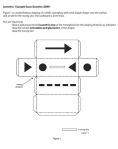2012 VCAD Exam Cover:
Be prepared!
The school will supply most of the materials and equipment needed to complete the exam. Students will be given a package that includes grey-led pencils, sharpeners, erasers, coloured pencils and rulers. It is recommended that students at least bring in a pen to write with.
Format
- The Year 12 examination allows 90 minutes writing time
- The exam includes a Question and answer booklet and a Resource book. All questions should be answered in the spaces provided in the question and answer booklet. All questions must be answered.
Content
In the exam, you will be presented with both practical drawing questions and written short-answer questions based on work completed during the year. The only part of Unit 3 & 4 that is NOT examined on the exam is the writing of a design brief (Unit 4, Outcome 1).
The exam is based on the following:
- Everything covered in the Unit 3 folio and Unit 4 folio, including drawing methods, design elements and design principles.
- All aspects of design analysis, including an understanding of appropriate terminology and the ability to analyse visual communications effectively.
- All aspects of professional practise including the design process, the designer-client relationship, and decisions that may be made during the design and production of visual communications.
What do I study?
- All questions are compulsory. You must answer every question.
- There will be five to eight questions on the paper.
- Practical (drawing) questions take up to 60 to 70 percent of the paper.
- Analysis of visual communications takes up to 15 to 20 percent of the paper.
- Questions regarding professional practise take up to 15 to 20 percent of the paper.
- Some questions may provide choices between options
- Some questions may contain several parts
- Written questions may require either a short response or long response. The number of lines provided will indicate the length of response required.
- The value of each question (or part of a question) will be indicated by the number of available marks.
- You will be provided with visual material related to analysis, professional practise and practical questions.
VCAA resources:
The VCAA website has published past Visual Communication & Design examinations (and assessment reports) since 2004. They can all be viewed here:
Example Exam Questions:
Feel free to attempt any of the following questions and I will be happy to assess them before the Practise Examination:
BRE
RENDERING |
|
 |
Figure 2 is a line drawing of a toy car. Render the car to show the textures listed and to enhance the form of the car. |
BREAK
WRITTEN COMPONENT |
|
The written component of the examination will test your skills in ‘visual analysis’ and ‘professional proactise’. Students should reflect back on SAC 2 and SAC 3.
|
|









Leave a comment